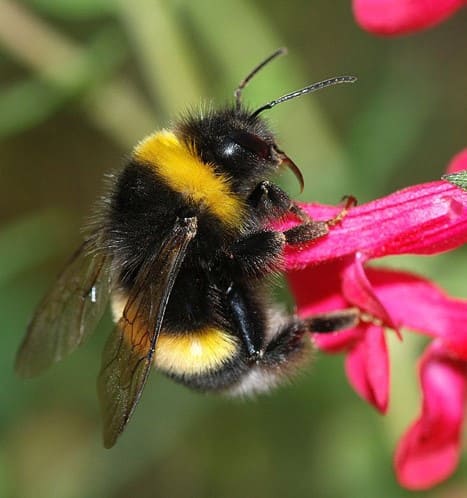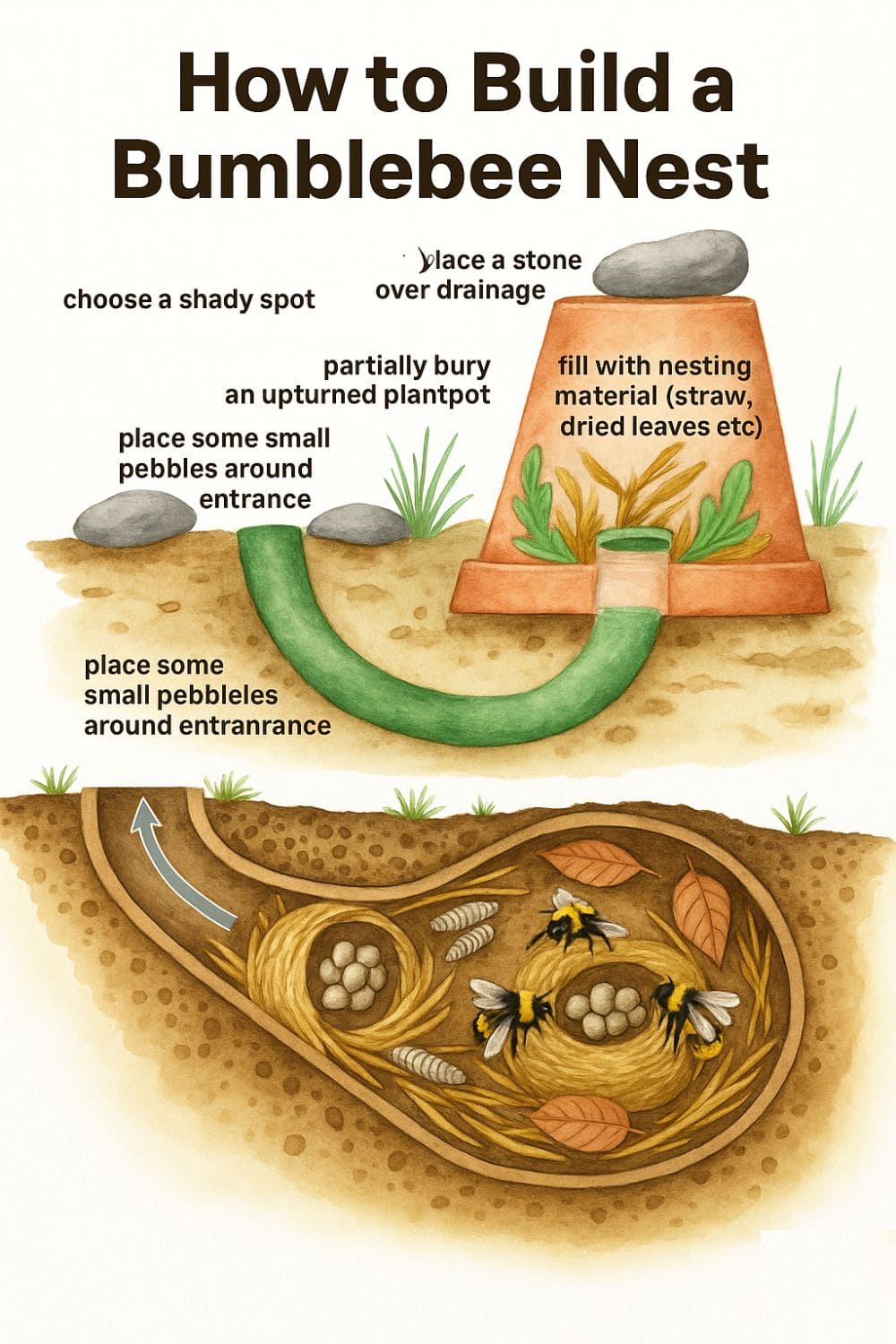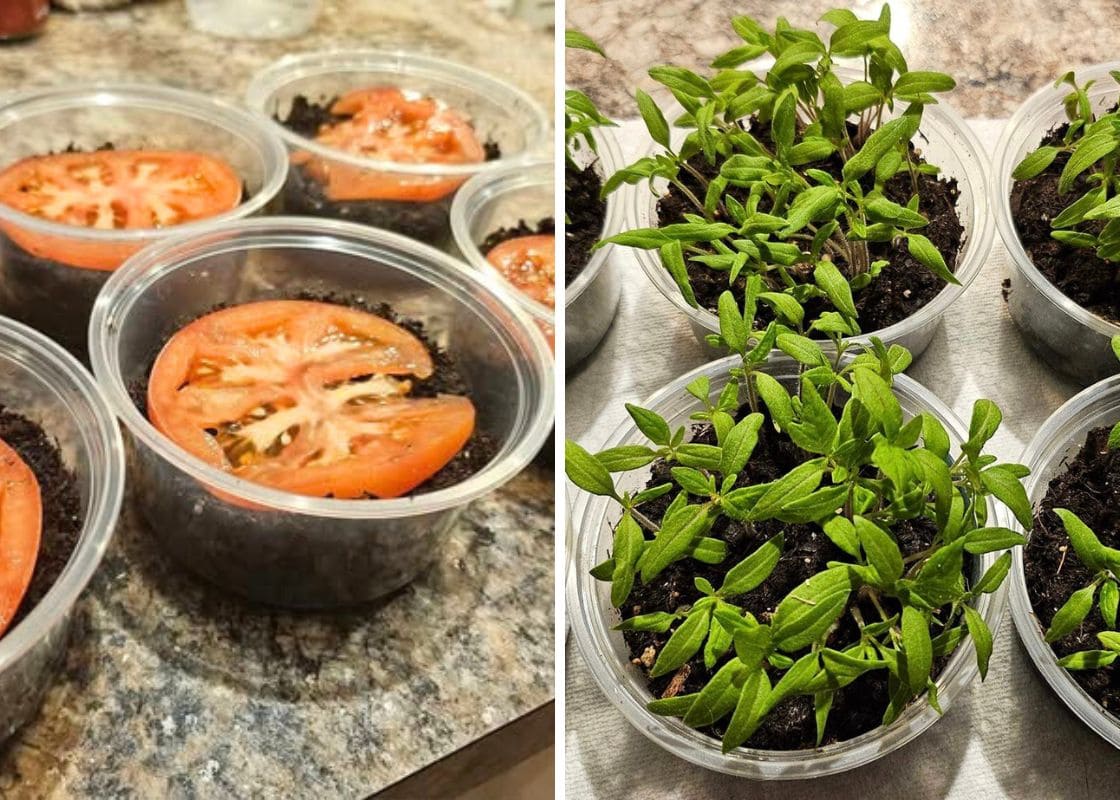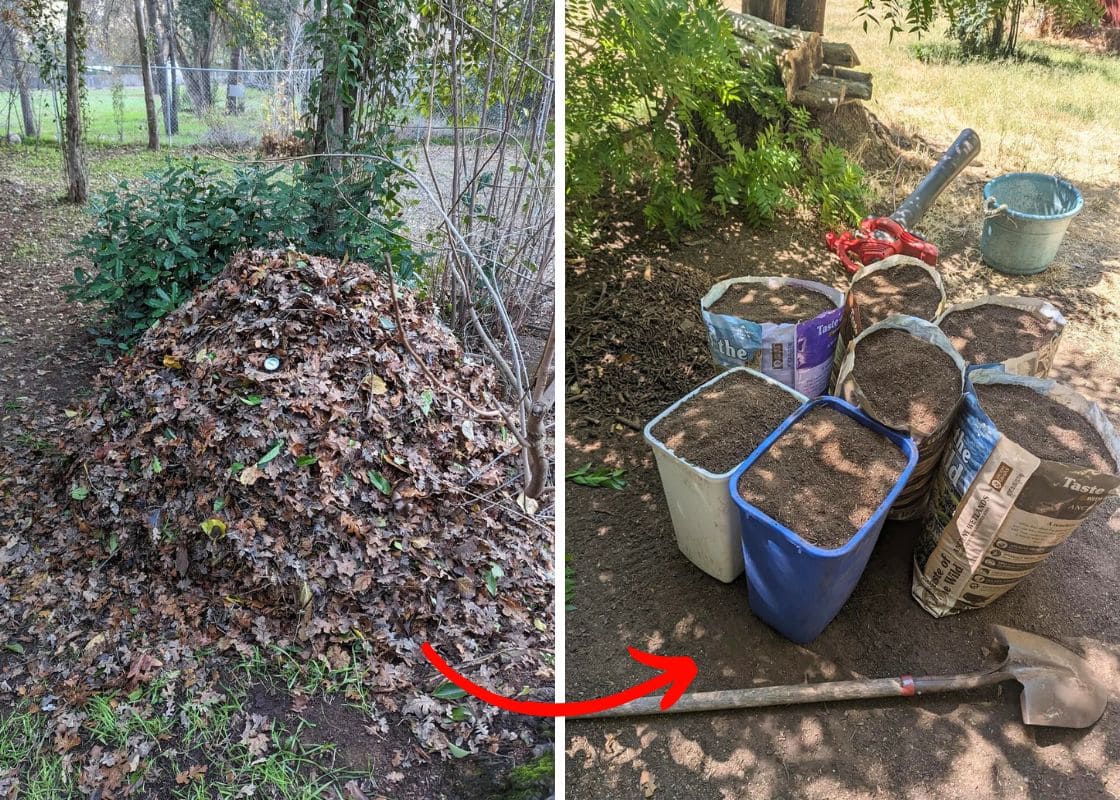Every gardener knows the joy of seeing bumblebees weaving through flowers on a warm spring day. Their steady buzzing feels like the heartbeat of a healthy garden.
These little pollinators are vital for fruits, vegetables, and flowers to thrive.
Unlike honeybees, bumblebees don’t live in hives. They prefer small, hidden places like abandoned burrows or piles of dried grass.
The good news is, you can recreate those conditions yourself with a simple DIY nest. It doesn’t take much, just a clay pot, some natural materials, and a bit of patience but the payoff is enormous.
Why Encourage Bumblebees?

Bumblebees are incredibly efficient pollinators. Their fuzzy bodies collect more pollen, and their buzz pollination, where they vibrate flowers to release pollen is essential for plants like tomatoes, peppers, and blueberries.
By creating a safe nesting site, you’ll see your garden bloom more fully, your vegetables set fruit more reliably, and your flowers stay vibrant longer.
You’re also giving these bees a chance to survive and thrive in a world where natural nesting sites are becoming scarce.
Materials You’ll Need
- 1 medium clay or terracotta pot (20-30 cm wide, with drainage holes)
- 1 flat stone (to cover the drainage holes inside the pot)
- A short piece of old garden hose or hosepipe (30-40 cm long, 2-3 cm wide)
- Straw, dried leaves, moss, or pet hair (nesting material)
- Small pebbles or stones
- A spade or trowel
- A shady, quiet spot in your garden
Step-by-Step Guide to Building a Bumblebee Nest
Step 1: Choose the right location
You want to find a quiet, shady corner of your garden where the nest won’t be disturbed by children or pets. Full sun can overheat the pot, so partial shade works best.
The spot should also be close to flowers and plants that bees will forage on and the shorter the commute, the better for them.
Step 2: Prepare the pot
Turn your clay pot upside down so it forms a small dome. Before burying it, place a flat stone over the drainage holes inside.
This simple step stops light from streaming in and prevents water from running straight through, but it still lets the air circulate inside the nest.
Step 3: Add nesting material
Fill the cavity of the pot with a thick layer of straw, moss, or dried leaves. You want it snug enough to feel warm, but not so tight that air can’t move through.
Imagine you’re preparing a cozy bedding space.
Bees will add their own wax and build cells once they settle, but this gives them the foundation they need to feel at home.
Step 4: Install the entrance tunnel
Take your piece of hosepipe and slide one end inside the pot, resting it gently among the nesting material.
The other end should poke out of the soil, angled slightly upward like the entrance to a burrow.
This tunnel not only makes the nest feel more natural but also protects it from flooding during heavy rain.
Step 5: Partially bury the pot
Dig a shallow hole and place the pot inside, leaving the entrance pipe sticking out.
You then cover the pot with soil up to its rim, firming it gently so it feels secure.
Around the tunnel opening, scatter a few small stones or pebbles to camouflage the entrance and make it look like a natural part of the ground.
Step 6: Leave it for the bees
Once it’s set up, step away and let nature take its course. Bumblebee queens begin searching for nesting sites in early spring, so the earlier you prepare this, the better your chances.
Don’t be tempted to check inside or disturb it once it’s placed as bees need peace to feel safe enough to move in.
Tips from My Experience
The first time I built one, I checked it almost every day, hoping to spot a new colony. Nothing happened that spring, and I nearly gave up.
But the following year, I noticed a queen bee crawling into the little hosepipe tunnel, and my garden has been buzzing ever since.
Sometimes bees won’t move in immediately, but leaving the nest in place for another season often does the trick.
I’ve also found that setting up more than one nest around the garden improves the odds as bees are choosy, and the more options they have, the better.
And finally, I always make sure the entrance pipe is angled so water can’t flow inside; a dry, sheltered nest is far more likely to be chosen.







